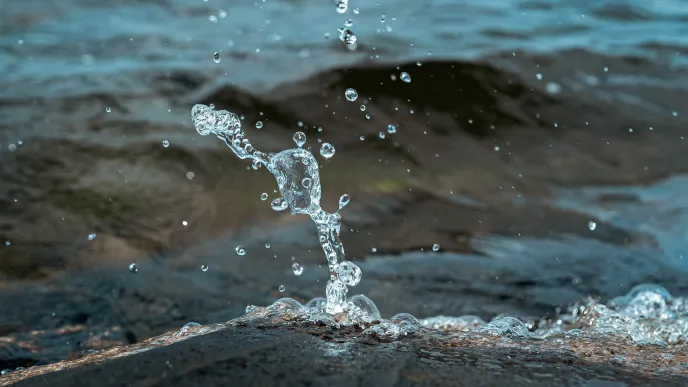Clean freshwater is one of the basic necessities of life, but its availability is diminishing due to climate change and increasing consumption. Different desalination technologies offer a vital solution to recycle water and ensure access to clean water in an environmentally friendly way.
One of these technologies is reverse osmosis. In reverse osmosis, water flows through a module made of desalination membranes, leaving salt and other molecules on one side of the membrane and recovering pure water.
During the filtration process, the membranes become fouled as contaminants such as minerals, bacteria and organic matter accumulate on them. Fouling reduces membrane efficiency and prevents water from flowing through the membrane. Ultimately, membrane filters generate a huge amount of waste when they are taken out of service and sent to landfill or incineration. That is why LUT is studying how to give membranes a new life.
"The environmental impact of discarded membranes is huge, with around two million membrane modules being wasted every year," says Mika Mänttäri, professor of membrane technology at LUT University.
Cleaning and coating gives membranes a new life
To extend the life of membranes, LUT researchers have developed new techniques to clean and reactivate the membrane surface. This reduces the waste generated in desalination plants while saving resources by reducing the frequency with which new membranes are produced.
During the cleaning process, the accumulated dirt on the membrane surface is either chemically washed off or broken down by oxidation. However, this process also degrades the dense surface layer of the membrane, significantly reducing its separation efficiency and recyclability.
The solution studied at LUT is based on a recoating process. There, a new surface layer is created by layering alternately positively and negatively charged polymeric compounds, or polyelectrolytes, on a highly charged film surface. These differently charged polymeric compounds are alternated layer by layer until the film reaches the desired tightness and separation capability.
"In desalination, the membrane surface has to be very dense, which makes it challenging to achieve through re-coating. In the purification process, however, the membranes can be coated with a less dense layer, making them ideal for the paper, food, and pharmaceutical industries, wastewater treatment, and softening drinking water by removing lime," Mänttäri says.
LUT studies show that recycled membranes offer a viable alternative to commercial ones. In tests, coated membranes were able to permeate up to 100 per cent more water than commercial membranes while maintaining the same separation efficiency.
In addition to membrane cleaning, LUT is also exploring the possibility of reusing membrane modules without having to remove or open the membranes for cleaning. This allows the whole module to retain its functionality for a longer period.
"To enable larger-scale recycling of membranes, we must be able to coat membranes in modules. Such solutions extend the life cycle of the modules and further reduce waste generation," Mänttäri explains.

Subscribe to our Curious People newsletter

A comprehensive solution to the growing need for wastewater treatment
In 2024, the EU published a new Urban Waste Water Treatment Directive (UWWTD) that will make pharmaceutical and cosmetics manufacturers pay to remove toxic micropollutants from urban wastewater. According to Mänttäri, the use of recycled membranes can provide a workable solution for the practical implementation of the Directive.
"Pharmaceuticals can be removed from water by oxidation, but this does not have the same effect on phosphorus, for example. Membrane filtration offers a comprehensive solution, as it effectively removes nearly all contaminants," he adds.
Science-based solutions extend the life cycle and further reduce waste generation.
LUT's unique membrane recycling research has also attracted international interest, and there has been expressed interest in collaboration from institutions such as the University of Twente. Mänttäri believes that there are still many new opportunities to be explored.
"So far, only a few polyelectrolyte pairs have been studied for membrane resurfacing, even though there is a huge potential for using different combinations. The question of recycling used membranes also remains open. These are issues that require further research and long-term trials," he says.
More information:






